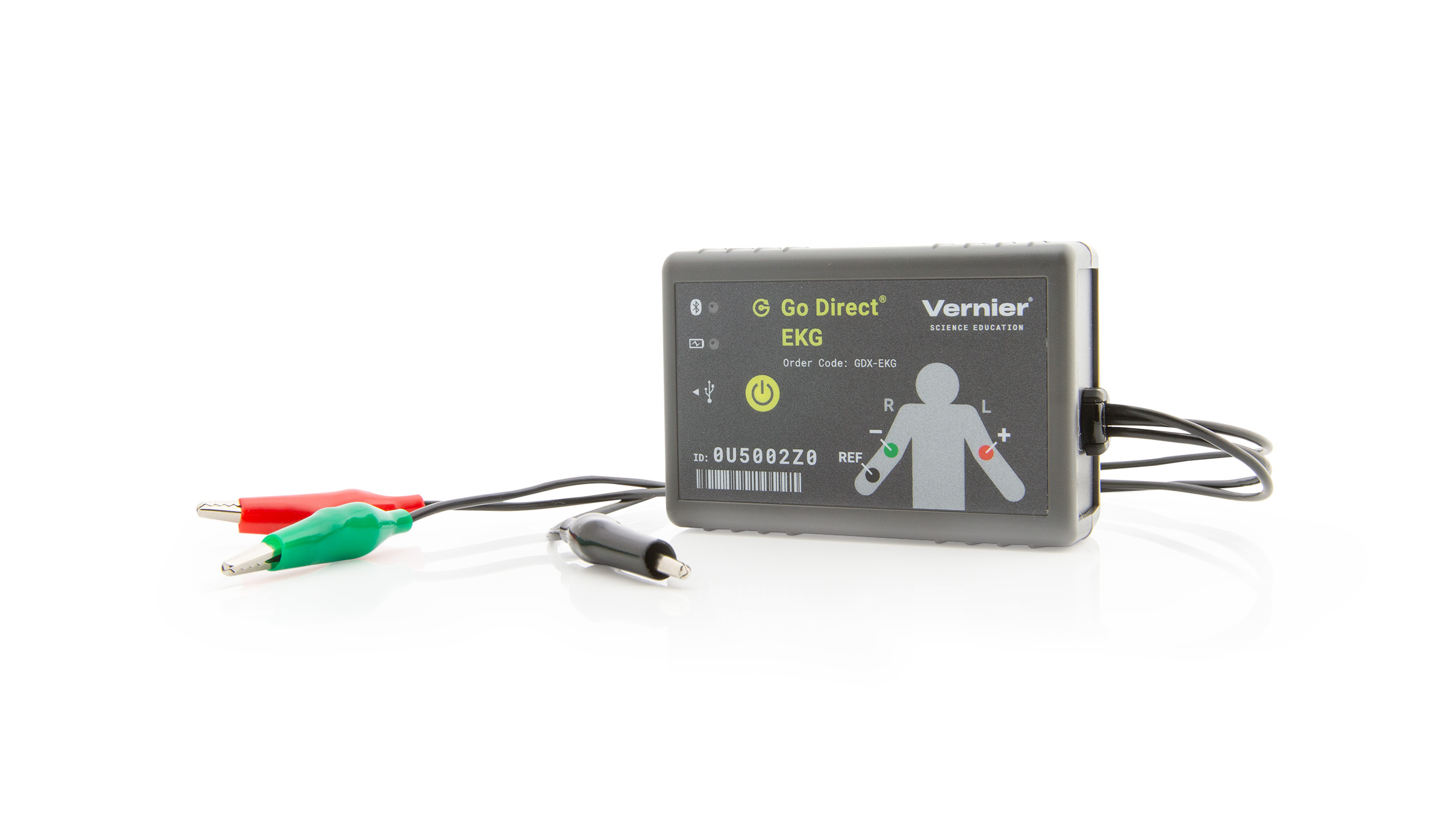Troubleshooting
General: Press the power button on the sensor to turn it on. Connect your sensor as described in the Getting Started instructions for your device.
- Primary Test: The most common cause of problems is a poor connection, either between the tabs and the skin, or between the clips and the tabs. As a result, confirm that the electrode tabs are fresh, allow them to stabilize with the skin of the subject for at least 2 minutes. Then make sure the leads are connected to the tabs properly. A drawing on the sensor shows the proper connections. Note that electrode tabs do not work as well if they are old or have been allowed to dry out.
- Secondary Test: Make sure that the person connected to the sensor is seated or lying down and that they are relaxed and do not move during recordings.
- Tertiary Test: Limit all sources of electrical noise. Make sure that mobile devices, computer monitors, electrical outlets are at least 0.5 m away form the sensor and subject. Make sure that the device that is being used to collect data is not plugged into AC power. The best location for the sensor is on the subject’s lap or knee during a recording.
Additional Troubleshooting
- Why is my EKG trace noisy? Why doesn't my EKG trace look like the trace in the book?
- Could a cell phone affect EKG data?
- Are your EKG sensors Optically Isolated?
- Is there a good way to attach the EKG sensor to the stationary arm of the Goniometer so the sensor box is out of the way during experiments?
- Will my device work with Go Direct Sensors via Bluetooth?
- Graphical Analysis App Bluetooth issues on Windows 10: Do I need to pair?
- How do I remove or replace a Go Direct battery?
- What are the temperature limitations on the Go Direct 300 mAh battery?
Specifications
- Range: ±200 mV
- Resolution: 0.024 µV
- Maximum sampling rate: 400 samples/s
- EKG channel settings
⚬ High-pass: 0.300 Hz
⚬ Low-pass: 22.5 Hz –3 dB cutoff with –80 dB attenuation above 50 Hz - EMG channel settings
⚬ High-pass: 2 Hz
⚬ Low-pass: 29 Hz –3 dB cutoff with –80 dB attenuation above 50 Hz - Heart rate calculation
⚬ Sample windows: 6 s
⚬ Advance interval: 1 s - Maximum Sampling Rate: 400 samples/s
- Connections:
⚬ Wireless: Bluetooth® v4.2 (wireless range 30 m unobstructed)
⚬ Wired: USB 2.0 full speed - Battery: 300 mA Li-Poly
⚬ Battery Life (single, full charge): ~24 hours continuous data collection
⚬ Battery Life (lifetime): 2 – 5 years (typical)
Calibration
Calibrate? No. The sensor is set to the stored calibration before shipping. No calibration process is given for this sensor.
Battery Troubleshooting
- If the sensor can be turned on when connected by USB but not when disconnected from USB, the battery either needs charging or has reached its end of life and can no longer hold a charge.
⚬ First, try charging the sensor for several hours. - If the sensor still won’t turn on when disconnected from USB, try swapping the battery with a working sensor to see if the problem follows the battery or stays with the sensor.
⚬ If the problem stays with the sensor, the battery is probably not the issue.
⚬ If the problem follows the battery, the battery has likely reached its end of life. - If you intend to use this sensor wirelessly, its battery will need replacing.
Go Direct® 300 mAh Replacement Battery (GDX-BAT-300 ) - See How do I remove or replace a Go Direct battery? for more information (including a video).
Rechargeable batteries are covered by a one-year warranty.
Batteries should last two to five years in typical use.
Related Products
- Micro USB to USB-C Cable (
CB-USB-C-MICRO ) - Go Direct® Charge Station (
GDX-CRG ) - Go Direct® Respiration Belt (
GDX-RB ) - EKG Sensor (
EKG-BTA )
Replacement Parts
- Go Direct® 300 mAh Replacement Battery (
GDX-BAT-300 ) - Micro USB Cable (
CB-USB-MICRO ) - EKG Electrodes (
ELEC )

